Blubber Knife Item Number: E2272-0 from the National Museum of Natural History
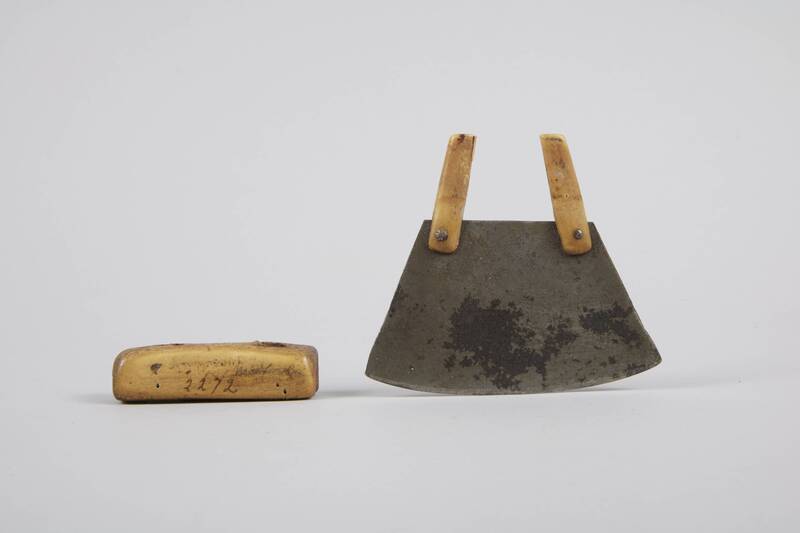
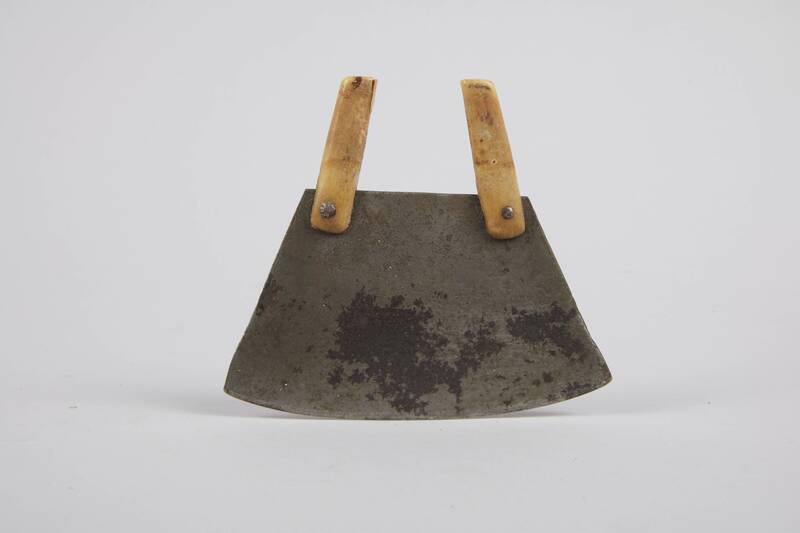
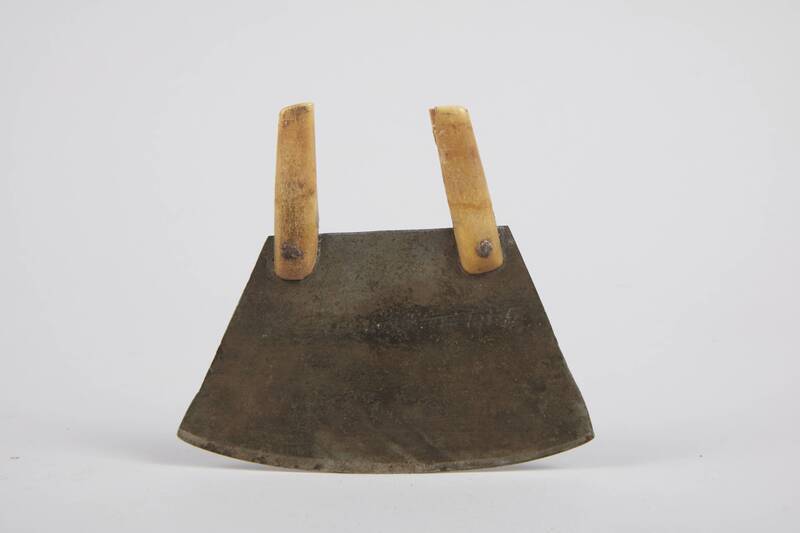
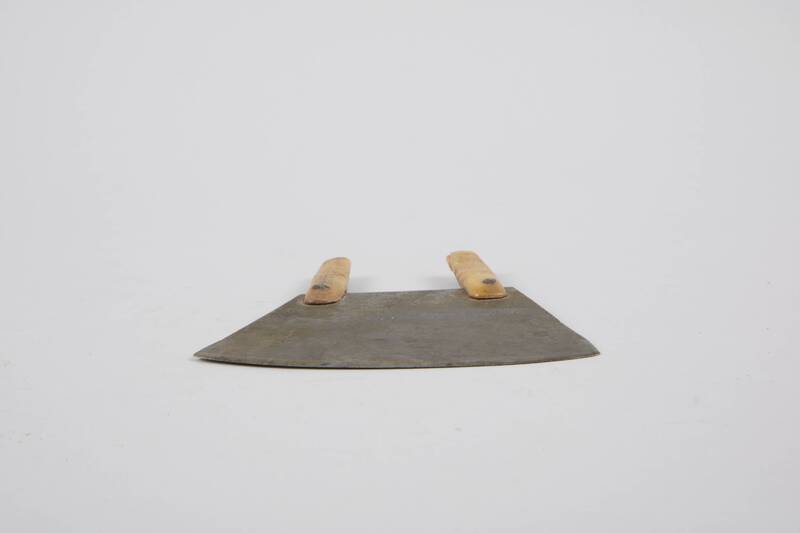
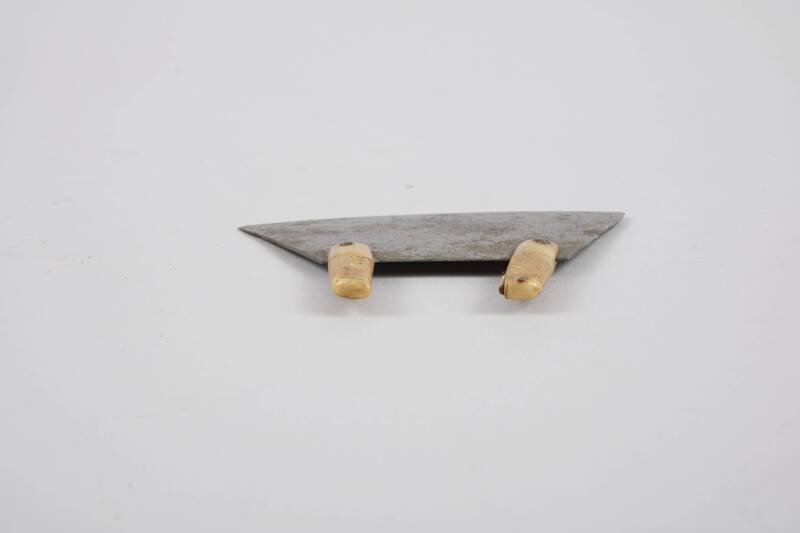
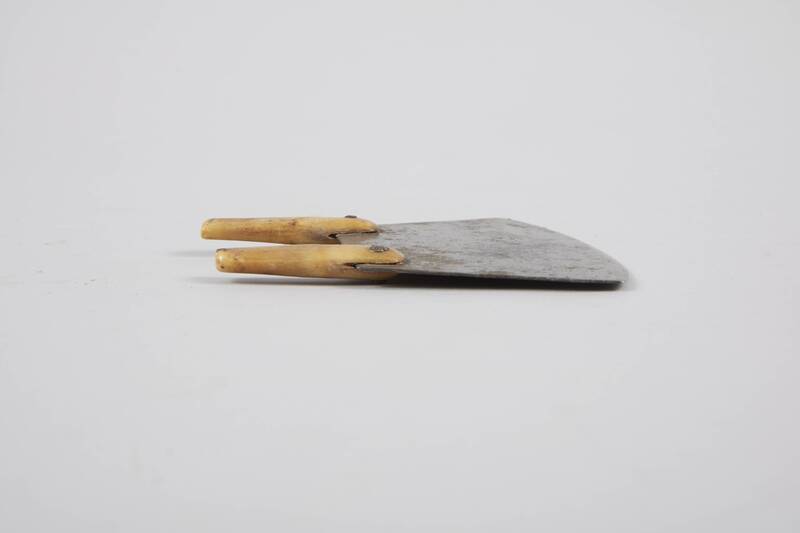
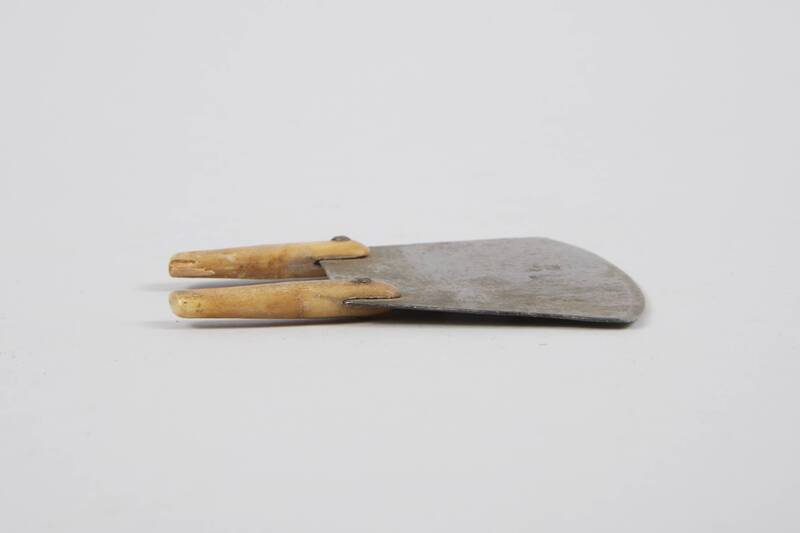
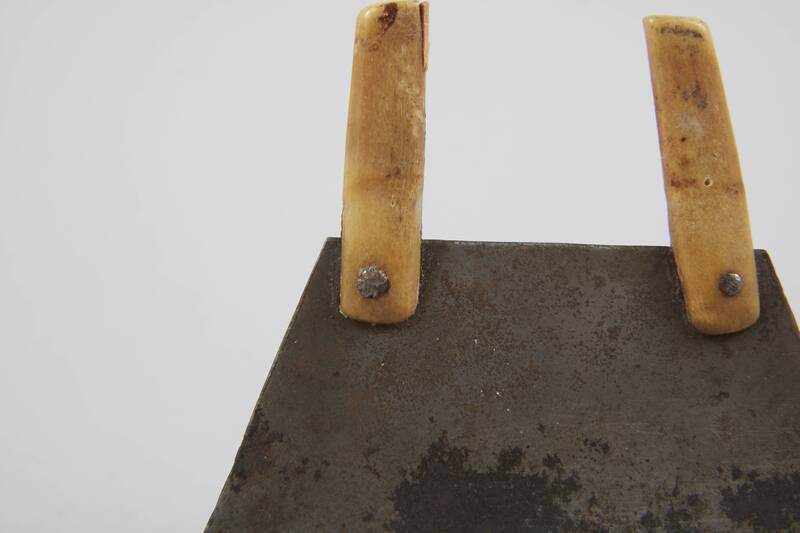
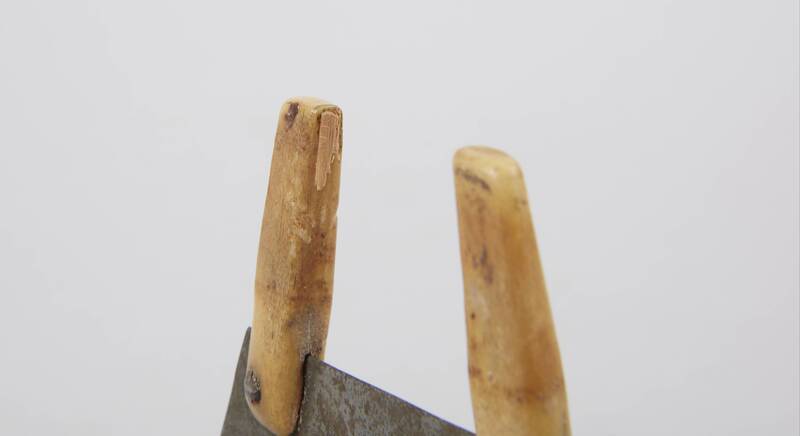


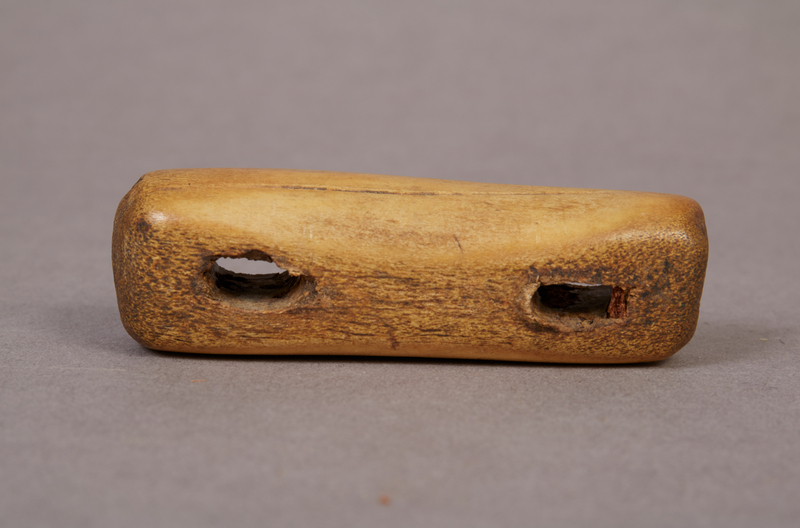
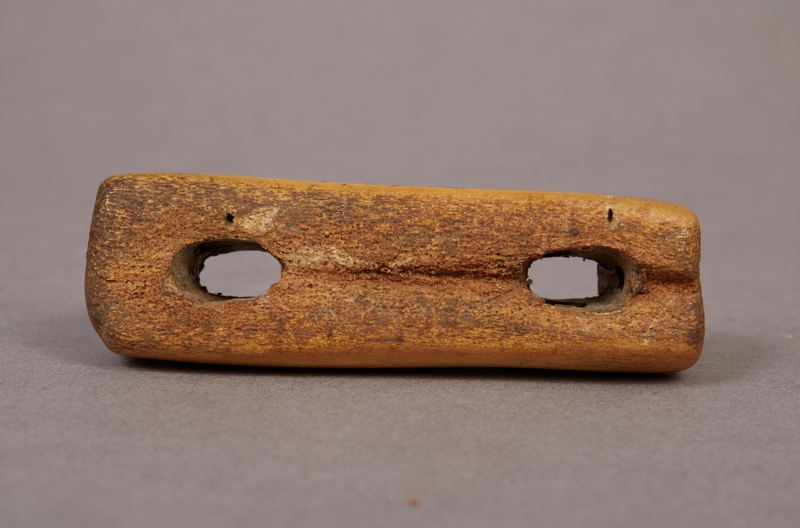
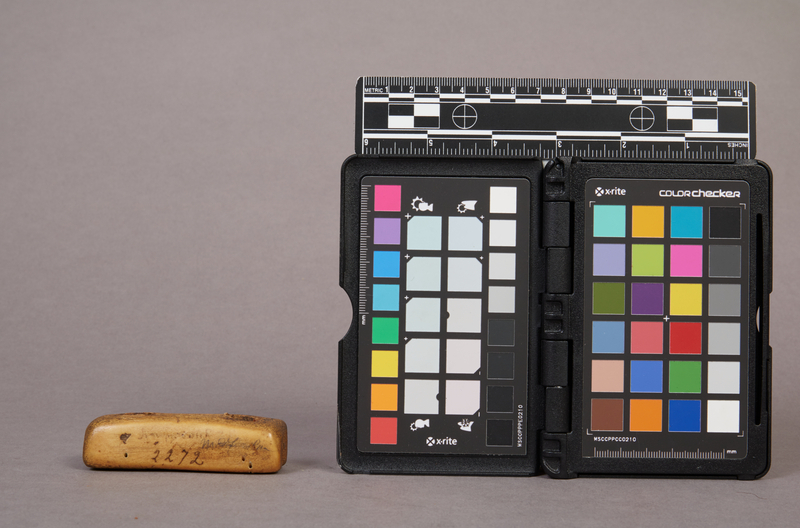

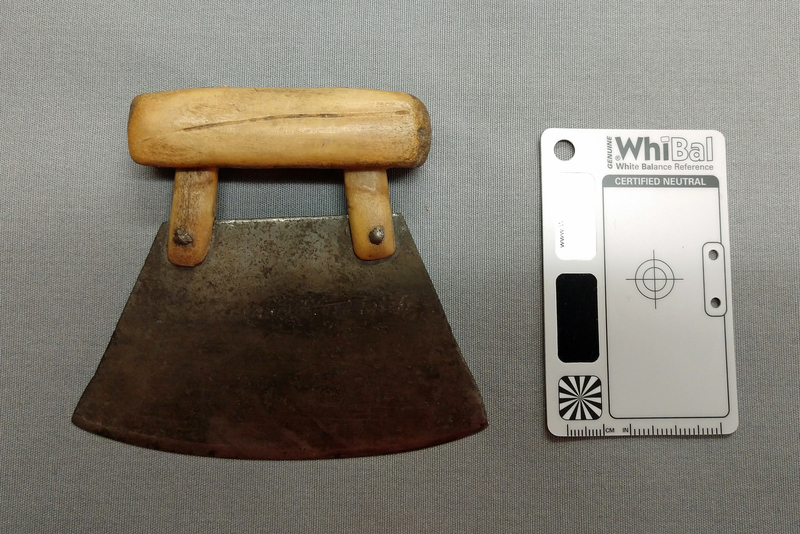
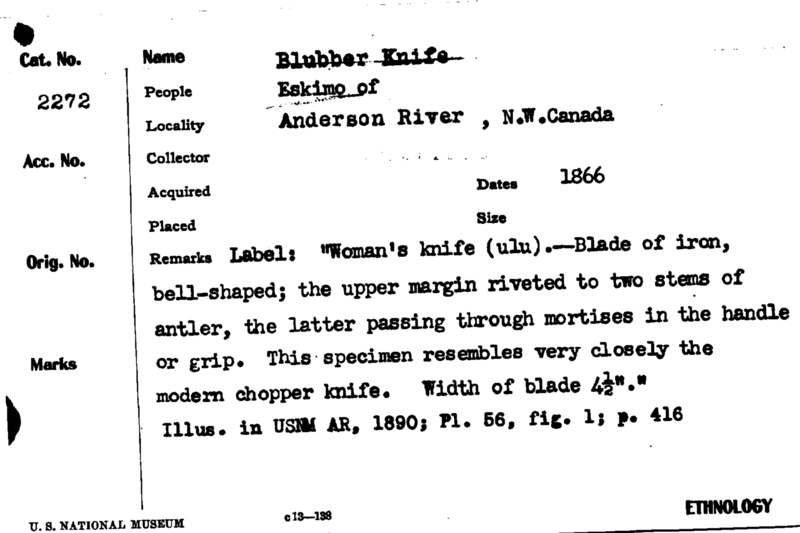

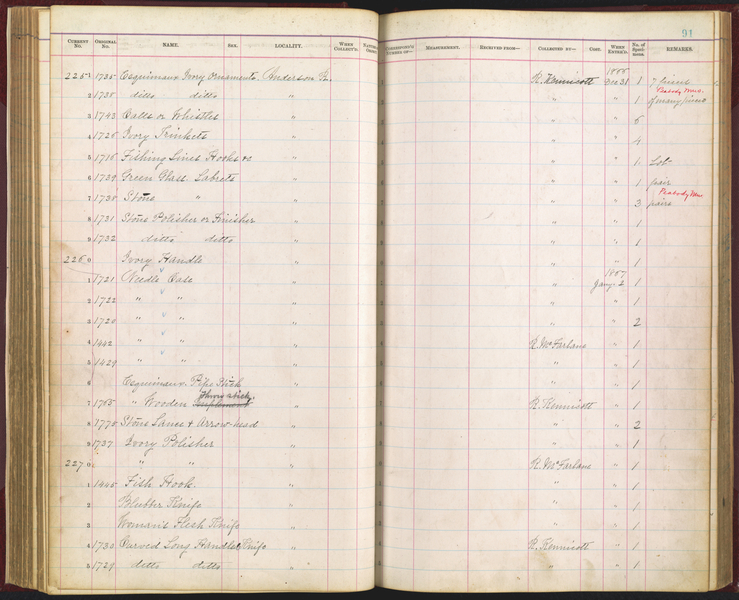
Notes
FROM CARD: "LABEL: "WOMAN'S KNIFE (ULU).--BLADE OF IRON, BELL-SHAPED; THE UPPER MARGIN RIVETED TO TWO STEMS OF ANTLER, THE LATTER PASSING THROUGH MORTISES IN THE HANDLE OR GRIP. THIS SPECIMEN RESEMBLES VERY CLOSELY THE MODERN CHOPPER KNIFE. WIDTH OF BLADE 4 1/2"." ILLUS. IN USNM AR, 1890; PL. 56, FIG. 1; P. 416."The ulu handle had become separated from the blade. The blade was part of ET14501, but has now been reunited with the handle.Source of the information below: Inuvialuit Pitqusiit Inuuniarutait: Inuvialuit Living History, The MacFarlane Collection website, by the Inuvialuit Cultural Resource Centre (ICRC), Inuvik, N.W.T., Canada (website credits here http://www.inuvialuitlivinghistory.ca/posts/12 ), entry on this artifact http://www.inuvialuitlivinghistory.ca/items/8 , retrieved 1-3-2020: note: only the knife handle was documented on this website: Handle for an ulu made from bone or antler. Two holes have been drilled through the handle for attaching tangs that in turn would have been connected to a blade. More information here: http://www.inuvialuitlivinghistory.ca/item_types/58: An ulu is a knife with a crescent-shaped blade attached to a handle made of wood, bone or antler. The design of an ulu ensures that the cutting force is centred more over the middle of the blade than with an ordinary knife. Ulus are used for skinning animals, scraping skins, cutting hides when sewing as well as for other household tasks. They are sometimes called 'women's knives' since they usually are associated with women's tasks.Listed on page 36 in "The Exhibits of the Smithsonian Institution at the Panama-Pacific International Exposition, San Francisco, California, 1915", in section "Arts of the Western Eskimo".
Item History
- Made in Northwest Territories, Canada
- Collected in Northwest Territories, Canada
- Received from Roderick R. MacFarlane on December 21, 1866
What
- Name
- Blubber Knife
- Identification Number
- E2272-0
- Type of Item
- knife
Who
- Culture
- Eskimo, Inuit and Inuvialuk
- Received from
- Roderick R. MacFarlane
Where
- Holding Institution
- National Museum of Natural History
- Made in
- Northwest Territories, Canada
- Collected in
- Northwest Territories, Canada
When
- Acquisition Date
- on December 21, 1866
Other
- Accession Number
- 66A00090